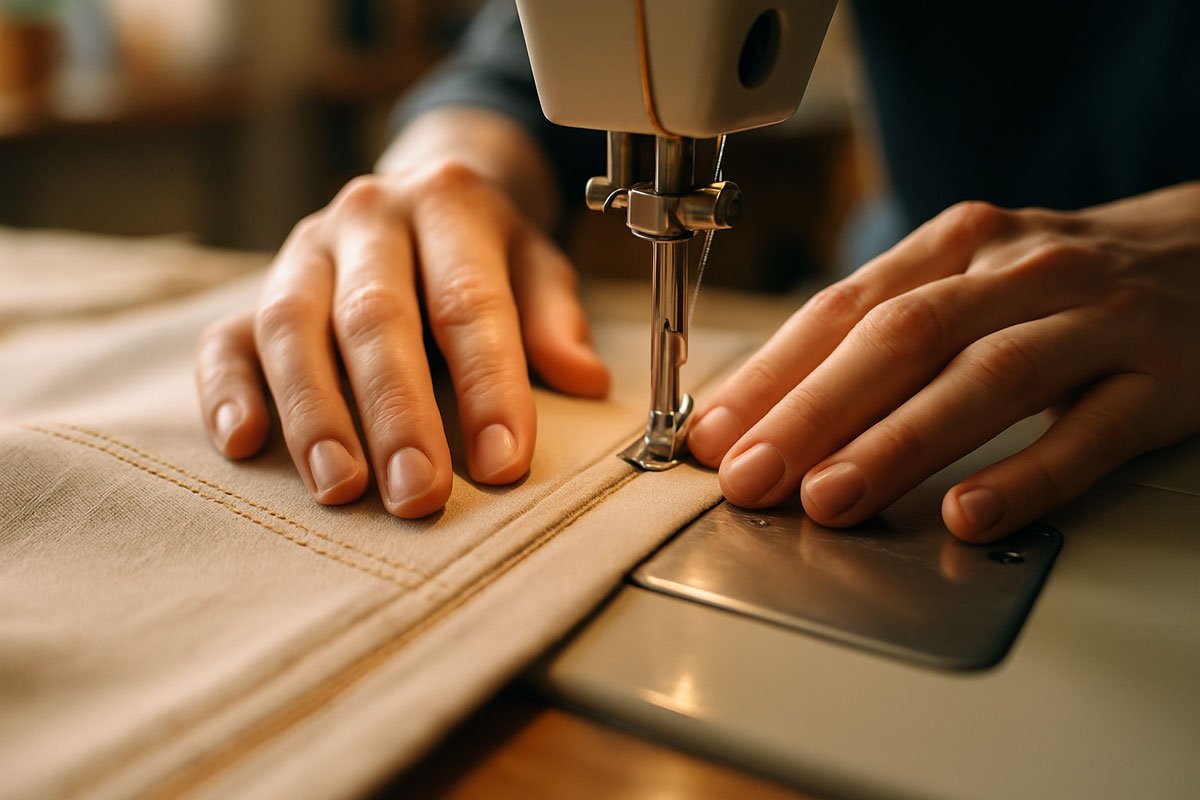Mastering the Stitch: A Comprehensive Guide to Nahttypen (Types of Seams)

Introduction: What Are Nahttypen and Why They Matter
The term **Nahttypen** comes from German, and it translates directly to “types of seams.” For anyone involved in garment creation, from the home sewer to the professional designer, understanding these fundamental techniques is absolutely essential. A seam is far more than just a line of thread holding two pieces of fabric together.
The choice of seam plays a dual role in any textile project. Structurally, it determines the integrity and strength of the final product, ensuring it can withstand wear, washing, and stress. Aesthetically, the seam contributes to the finish, drape, and overall professional look of the garment.
Choosing the right seam is critical for both the durability and the quality of the finished item. An incorrect seam choice can lead to unraveling, bulkiness, or a garment that simply doesn’t move or fit as intended. Mastery of Nahttypen is the secret to creating pieces that are not only beautiful but truly last.
The Foundation: Essential Nahttypen for Every Project
Every seamstress and tailor relies on a core set of seams that form the backbone of almost all sewing projects. These are the workhorses that you will use time and time again.
The Plain Seam (The Workhorse)
This is the most fundamental of all **Nahttypen**. It is created by placing two pieces of fabric right sides together and stitching a straight line along the edge. The seam allowance is then typically pressed open or to one side.
The plain seam is quick, easy to execute, and provides a neat finish when the edges are properly maintained. It is best suited for medium-weight woven fabrics like cotton, linen, and basic canvas where strength is needed without excessive bulk.
However, because the raw edges are left exposed, this seam requires an additional finishing step, such as zigzag stitching or serging, to prevent the fabric from fraying over time.
The Zigzag Seam (The Flexible Friend)
The zigzag seam is invaluable when working with materials that have a tendency to stretch or fray easily. It involves a stitch pattern that moves back and forth, creating a flexible line of stitching.
This seam is best for knit fabrics, such as jersey or interlock, because the stitch allows the fabric to stretch without the thread breaking. It is also often used as a simple edge finish on the seam allowance of a plain seam to prevent fraying.
The flexibility and ease of application on a standard sewing machine make the zigzag stitch a reliable friend for many everyday projects.
The Overlock Seam (The Professional Finish)
Often created with a specialized machine known as a serger or overlocker, this seam is the gold standard for a professional finish. The machine simultaneously sews a strong, interlocking stitch, trims the excess fabric, and wraps the raw edge.
Overlock seams are ideal for knitwear, activewear, and any fabric that frays heavily, as they encase the edges completely. They provide a clean, stretchy, and highly durable finish that is commonly seen in ready-to-wear clothing.
While a serger is required for a true overlock, many modern sewing machines offer a simulated overlock stitch that can achieve a similar, though less robust, result.
Seams for Strength and Durability
When a garment needs to stand up to significant stress, frequent washing, or heavy use, a stronger class of **Nahttypen** is required to ensure longevity.
The Flat-Felled Seam (The Denim Standard)
The flat-felled seam is renowned for its strength and clean appearance on both the inside and outside of the garment. It is constructed by folding and stitching down the seam allowances, resulting in two parallel rows of visible topstitching.
This seam is the standard for items like denim jeans, work shirts, and durable outerwear, where maximum strength is paramount. Because all raw edges are fully enclosed within the seam, it is incredibly durable and resistant to wear and tear.
The only drawback is that it adds a slight bulk to the fabric and can be more time-consuming to sew than a simple plain seam.
The Lapped Seam (For Heavy Materials)
The lapped seam is characterized by one piece of fabric overlapping the other, with a line of stitching securing them together. This method is particularly useful for materials that are too thick or stiff to be folded and pressed open.
It is commonly used in projects involving leather, felt, or heavy canvas, which do not fray. The lapped seam can also be used decoratively, often with contrasting thread, to highlight the construction of the garment or item.
Seams for Elegance and Delicate Fabrics
For high-end garments, sheer materials, or projects where the inside of the garment must look as immaculate as the outside, specific **Nahttypen** are chosen for their refined finish.
The French Seam (The Couture Choice)
The French seam is the epitome of elegance in sewing. It is a double-stitched seam that completely encases the raw edges, leaving a clean, narrow finish on the inside of the garment.
This technique is perfect for lightweight, sheer, or delicate fabrics like silk, chiffon, and organza, where a visible raw edge would be unsightly or where the fabric frays easily. Although it requires two separate lines of stitching, the resulting finish is worth the extra effort.
The only limitation is that the French seam is not suitable for heavy or bulky fabrics, as it would create an overly thick and stiff ridge.
The Bound Seam (The Decorative Edge)
A bound seam involves enclosing the raw edge of the seam allowance with a strip of fabric, typically bias tape. This not only prevents fraying but also adds a decorative element to the garment’s interior.
Bound seams are often used in unlined jackets, coats, or reversible items where the inside of the clothing is visible. The choice of binding material, whether matching or contrasting, allows for a high degree of customization and a very polished look.
Selecting the Perfect Nahttyp: A Practical Guide
Choosing the correct seam requires a thoughtful assessment of the project’s needs. There is no single “best” seam; only the most appropriate one for the task at hand.
First, consider the fabric type. Woven fabrics that fray will benefit from enclosed seams like the French or Flat-Felled seam. Knit or stretch fabrics absolutely require a flexible seam, such as the Zigzag or Overlock, to maintain elasticity. Heavy materials may necessitate the Lapped seam to manage bulk.
Next, think about the garment’s function. Sportswear needs stretch and durability, pointing towards the Overlock. Formal wear demands a clean, invisible finish, making the French seam the ideal choice. Casual, everyday items can often rely on the Plain seam with a simple finish.
Finally, always test your chosen seam on a scrap of your fabric before committing to the main project. Adjusting the machine’s tension and stitch length is crucial to prevent puckering or skipped stitches, ensuring your chosen **Nahttyp** performs exactly as it should.
Conclusion: Elevating Your Craft with the Right Seam
The world of **Nahttypen** is rich with options, each designed to solve a specific construction challenge. From the simplicity of the Plain Seam to the complexity of the French Seam, every stitch type offers a unique combination of strength, flexibility, and aesthetic appeal.
By taking the time to understand these various seam types and their applications, you move beyond simply joining fabric. You begin to engineer a garment for performance, durability, and a truly professional finish.
Embrace the opportunity to experiment and practice these techniques. Your mastery of the correct seam will undoubtedly elevate your craft, transforming basic materials into high-quality, long-lasting creations.
Last modified:

